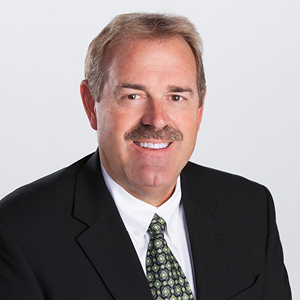
Powering What’s Possible with Security, AV, and Communications Integration
PSA TEC POWERING WHAT’S POSSIBLE BLOG SERIES | NSCA

By: Chuck Wilson, NSCA Executive Director
NSCA is excited to partner with PSA Security Network this year to bring new AV, security, and communications content to TEC 2017.
These three technologies are rapidly becoming fully integrated solutions – and that’s one of the things we’ll discuss at TEC 2017. We’re bringing security integrators valuable new information to capture new business in the world of security, AV, and communications integration.
Guy Grace, director of security at Littleton Public Schools, is leading one of the TEC 2017 sessions. Partner Alliance for Safer Schools (PASS): Helping School Districts with Security Questions will help security integrators better understand what school districts need and expect in terms of security solutions, as well as how AV and communications solutions tie in.
The district’s once disparate, standalone security, AV, and communications systems are now integrated for better, easier management and control. And this was made possible by integrators, of course!
In the aftermath of a 2013 school shooting, Grace began examining ways to improve his district’s security systems and processes. He quickly found that the process of researching security technology can be daunting. In 2014, Grace was introduced to PASS, which provided him with ideas and direction on how to improve security for approximately 15,000 students and staff at 28 school and administrative buildings.
The results of Grace’s work are known as one of the five most innovative integrated deployments in the security industry and public-safety sector. The security, AV, and communications technology project is known as one of the most advanced integrated systems used in any U.S. school district and includes access control, closed-circuit television systems (CCTV), and various intruder-detection systems. Each school’s systems connect to a seamless, district-wide networked security management system monitored 24/7 by district security officers. Security components are fully integrated at each school.

Chuck Wilson, NSCA Executive Director
Proximity card readers at designated entrances and security cameras on the building exterior provide accountability for who comes into the building and serve as crime deterrents. Through integration with the access-control system, surveillance cameras provide access accountability during and after regular business hours.
A physical security information management (PSIM) system integrates multiple unconnected security applications and devices, and controls them through one user interface. The PSIM system collects and correlates events from video, access control, sensors, analytics, networks, and building systems to identify and proactively resolve situations. Power over Ethernet cabling infrastructure allows intercoms, door controllers, and security cameras to be added as needed. Video intercom capabilities record audio and video of visitors on the district’s network digital video recorders. Integrated mass notification systems broadcast safety alerts inside and outside of schools for lockdowns, evacuations, tornado watches and warnings, secured perimeters, and other potential safety concerns.
This list could go on, but the point is this: The district’s once disparate, standalone security, AV, and communications systems are now integrated for better, easier management and control. And this was made possible by integrators, of course!
When we talk about “Powering What’s Possible” at TEC 2017, Grace’s story is a perfect example. Just a few years ago, security, AV, and communications systems were managed and operated separately. Today, safety, security, AV, and communications options can be added one layer at a time, as district budgets allow. Integrators can now provide schools (or hospitals, business, manufacturing facilities, etc.) with the option to start small, build on the technology already in place, and add additional layers of protection, communication, and peace of mind over time as needs, populations, and budgets change.
Software is what powers this possibility. It can be flexible enough to work with existing infrastructure, and robust enough to grow with the emergency management and communications needs and budgets of your clients.
We’re excited to see you at TEC 2017 and talk more about “Powering What’s Possible” in terms of security, AV, and communications integration.
“Security, AV, and communications are rapidly becoming fully integrated solutions,” says Chuck Wilson, NSCA executive director. “The new sessions we’re offering will help security integrators gain expertise to capture new business. We’re also excited to bring the director of security from Littleton Public Schools to TEC to help integrators better understand what school districts need and expect in terms of security solutions.”
EDUCATION PRESENTED BY NSCA:
Partner Alliance for Safer Schools (PASS): Helping School Districts with Security Questions Panel PresentationPresented by Guy Grace Jr., Director of Security and Emergency Planning, Littleton Public Schools; Scott Lord, Executive Officer, All SystemsMonday, May 8 3:30 PM – 4:30 PMOne-Day complete training in fiber optic theory, cabling, connector installation, splicing, testing and troubleshooting. Learn how to connect CCTV cameras, access control, and network security devices to fiber optic links. Students take an online pre-class tutorial that teaches the basics of fiber optics. At the classroom session students will build fiber optic links, see demonstrations of splicing and testing techniques, and take a written test to achieve the Certified Fiber Optic Technician rating from the Fiber Optic Association, the largest certification body in the fiber industry. All materials and tools for student use will be provided.
A Decentralized Approach for Paging and Voice EvacuationsPresented by William Nattress, BiampTuesday, May 9 1:00 PM-2:00 PMWithin the latest edition of the NFPA 72 a number of changes have been adopted that affect the solutions that can be placed within the built environment. The use of a Class N Ethernet infrastructure for alarm and signaling systems has now been created, as well as a focus on informing the building occupants of the nature of the crisis and the actions they are to take. The objective of this session is to understand how the communications industry now has a significant role in messaging and distribution of Emergency Communications Systems with monitored, distributed, integrated, and high quality audio solutions.
The Importance of Intelligibility with Emergency Communications SystemsPresented by Scott Lord, All Systems; Chuck Wilson, NSCAWednesday, May 10 8:00 AM- 9:30 AMRecent code changes are having a sizable impact on the intelligibility requirements of emergency communication systems. Designed for security, fire/life safety integrators, this session will provide further information on what code changes have been made and how they are having an impact on how emergency communication systems are designed and installed. Attendees of this session will hear from Scott Lord, Executive Officer with All Systems, an integration company already installing MNEC systems and Chuck Wilson, NSCA Executive Director about why you must plan now to compete in this new market and steps you should take to get started.
Digital Signage 101Presented by Scott Falso, Seneca; Jeffrey Weitzman, NavoriThursday, May 11 10:00 AM- 11:30 AMDigital signage is a powerful communications tool that spans well beyond "signs." This session will provide further information on what digital signage is; how it is being used; and the types and level of support integrators should be prepared to offer within this fast growth market segment. Attendees will leave with information on a solution made possible by Seneca and Navori, that integrators may want to consider adding to their AV solutions portfolio.
PSA TEC 2017 registration is now open. To register, click here.About NSCAThe National Systems Contractors Association (NSCA) is the leading not-for-profit association representing the commercial low-voltage electronic systems industry. NSCA is a powerful advocate for all who work within the low-voltage industry, including systems contractors/integrators, product manufacturers, consultants, sales representatives, architects, specifying engineers, and other allied professionals. NSCA is dedicated to serving its contractor members and all channel stakeholders through advocacy, education, member services, and networking designed to improve business performance. For more information, visit www.nsca.org.
